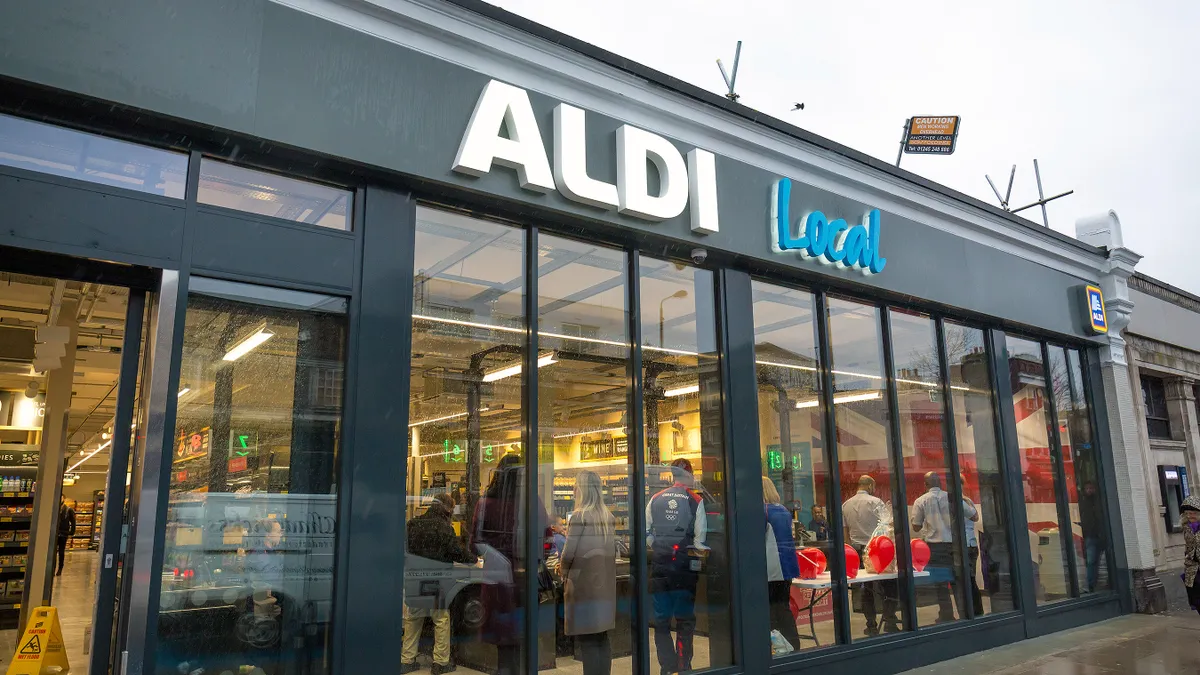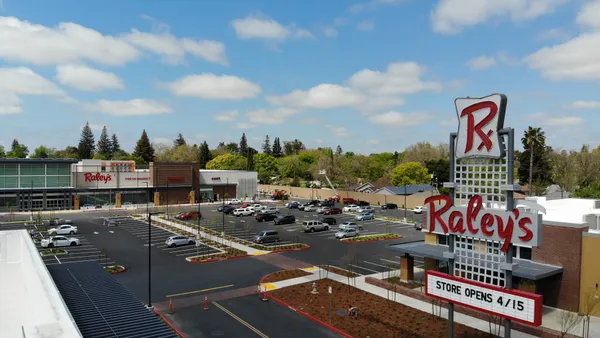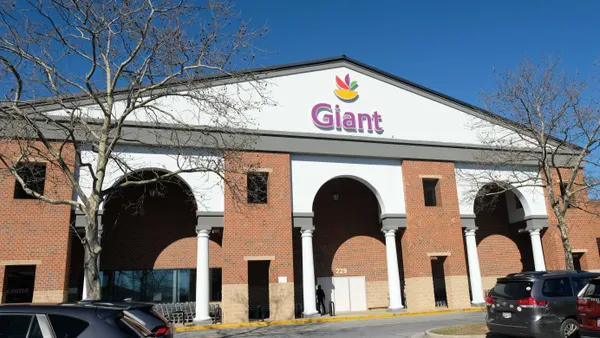Dive Brief:
- Aldi opened its first Aldi Local store last week in south London. The 6,000-square-foot location is smaller and offers 300 fewer products than a conventional Aldi. It also stocks products that are less bulky and easier for city dwellers to cart around.
- Aldi has opened four other scaled-down locations in London over the past several years. An Aldi U.K. spokeswoman told Grocery Dive the new "Local" branding is meant to distinguish the discounter's city stores from its conventional ones. The company does not have any small city stores outside London and does not currently have plans to build more. "The trial will be evaluated before any decision is made whether to continue with this branding inside London," she noted.
- The trial comes as Lidl has also begun testing high street stores around London, and as traditional competitors like Tesco and Sainsbury's have rolled out small-format stores. Aldi U.K. noted its new brand is not a convenience store, as some U.K. analysts have noted, but rather a smaller version of its hard discount grocery model.
Dive Insight:
Aldi Local and the chain's other city stores are a long way away, both physically and conceptually, from the U.S., but it's a solid bet that the concept will come to this country in some form or another.
Retailers from Target to Dollar General and Meijer are all scaling down their stores in order to access new, high-value shoppers in urban markets. Aldi, which mostly operates in suburban areas, no doubt wants to do the same.
The hard discounter already knows how to operate small stores, with an average box size in the U.S. of around 16,000 square feet. But shrinking that model down further and updating the assortment for urban dwellers poses challenges that have flummoxed retailers in the past. TCC global insights director Bryan Roberts recently toured Aldi Local in London and wrote the store is organized by shopping missions, ranging from cold prepared foods to ready meals and a product assortment familiar to any Aldi shopper.
"The main tweaks seem to be a focus on smaller pack-sizes and formats and the exclusion of general merchandise," he wrote, noting the store felt more spacious than its 6,400 square feet and was "a pleasure to navigate and shop."
Roberts said he believes the store will do well and offer Aldi an avenue to reach urban markets going forward, though he questioned the need for the "Local" branding.
"I think shoppers are wise to the fact that urban stores are smaller with narrower ranges, so the differentiation between Aldi and Aldi Local is perhaps not essential," he noted.
Bill Bishop, chief architect with Brick Meets Click, said what strikes him about Aldi Local is the flexibility it showcases in the hard discount model.
"The store embraces the same operating and merchandising principles as their larger stores and stays true to the emphasis on ultra-low prices," he told Grocery Dive.
Bishop said he has "little doubt" Aldi will eventually move into U.S. cities when it's ready to do so.
Aldi is in the midst of a $5 billion update and expansion plan aimed at disrupting traditional retailers in markets across the U.S. and capitalizing on demand for low-price, private label products. In the U.K., retailers like Tesco, Waitrose and Sainsbury's have scrambled to respond to the discounter threat. In the U.S., Aldi and Lidl have succeeded in disrupting retailers on pricing and are one of several forces fragmenting the $800 billion grocery market.
Discounters' ability to adjust their store formats as they grow is key to their success. In addition to updating its stores' layouts and assortment, Aldi has been building larger locations in the U.S., with one 25,000 square foot store in Washington, D.C. slated to open in 2022. Rival Lidl, which stumbled off the block, has put more focus on opening a range of store sizes, from a small footprint similar to its European model to the larger U.S.-specific stores. In December, the company even opened a location in the Staten Island Mall.













